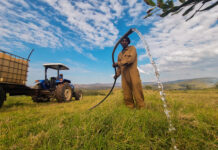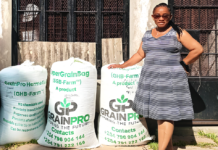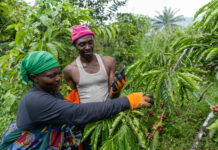Zambia’s National Food Reserve Agency (NFRA) has unveiled plans to export one million tonnes of maize to the Democratic Republic of the Congo (DRC) during the 2025/2026 financial year, in a move aimed at strengthening regional food trade and stabilising surplus grain stocks.
The planned export is part of NFRA’s broader strategy to offload up to 1.1 million tonnes of maize from the country’s strategic grain reserves, while simultaneously ensuring national food security. The DRC is the primary destination market for the bulk of the maize, underlining the growing agricultural trade ties between the two neighbours.
NFRA Executive Director, Kelvin Hambwezya, said the agency has already initiated discussions with stakeholders in the DRC to facilitate the export agreement. “The maize will mostly go to the Democratic Republic of the Congo, and we are working closely with our counterparts there to ensure the trade flow is efficient and beneficial to both sides,” Hambwezya said.
This initiative comes at a time when Zambia has reported above-average harvests in recent seasons, thanks to favourable weather patterns and strategic investments in agricultural productivity. However, surpluses have outpaced domestic consumption, prompting the government to explore export markets as a way to reduce storage costs and improve returns for farmers.
The NFRA’s plan aligns with President Hakainde Hichilema’s administration’s commitment to turning Zambia into a regional food basket. It also highlights the country’s capacity to support food-insecure neighbouring countries, particularly the DRC, which has struggled with recurrent maize shortages due to conflict, underdeveloped agriculture systems, and poor infrastructure.
In addition to stabilising food supply in the DRC, the deal is expected to boost Zambia’s foreign exchange earnings and generate employment opportunities in the grain value chain—from production and storage to logistics and border trade.
However, NFRA has clarified that the maize earmarked for export will not compromise Zambia’s domestic food security. “We are balancing the needs of the local market while supporting our neighbours. Strategic reserves will remain intact,” Hambwezya assured.
The agency also plans to enhance grain storage and handling capacity to accommodate rising production volumes and trade needs. There are ongoing efforts to improve silo infrastructure and invest in digital systems to track and manage grain movements more efficiently.
Observers say the Zambia-DRC maize export arrangement may serve as a model for future intra-African agricultural trade deals under the African Continental Free Trade Area (AfCFTA), which aims to enhance food security, reduce import dependence, and promote value addition within the continent.
If successful, the initiative will position Zambia as a reliable food supplier in Southern and Central Africa, while helping mitigate the cyclical maize shortages in the DRC. It also opens opportunities for further bilateral collaboration in agriculture, logistics, and infrastructure development across the border.
As Zambia prepares to begin shipments, regional leaders and trade experts will be watching closely to assess the impact of this large-scale maize export on both economies and the broader regional food system.








